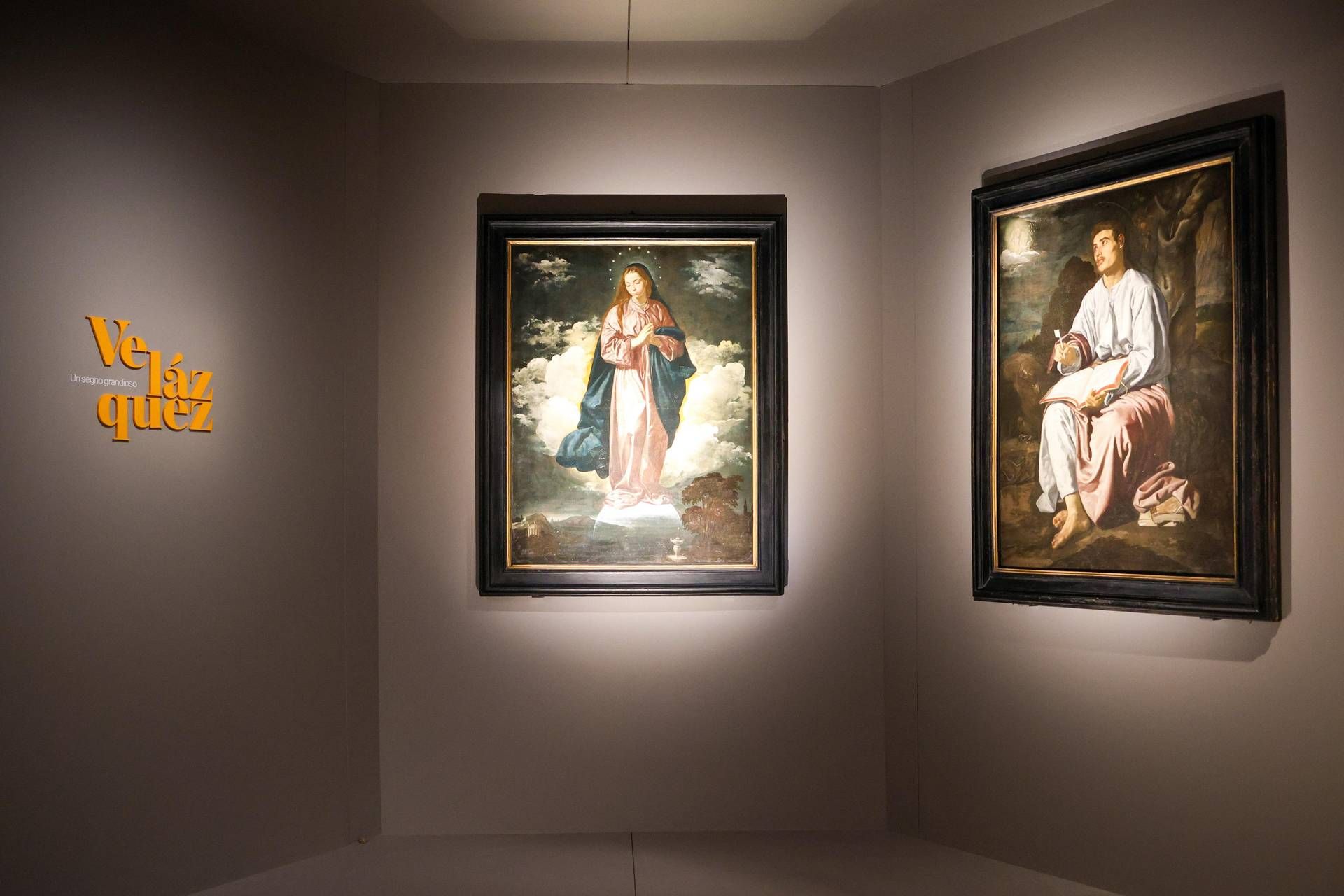At the Gallerie d’Italia – Naples, Intesa Sanpaolo museum, from 24 April to 14 July it is possible to admire the two masterpieces by Diego Velázquez “Immaculate Conception” and “St. John the Evangelist on the island of Patmos”, coming from the National Gallery in London , flanked by two other paintings depicting the Immaculate Conception: one by Paolo Finoglio, coming from the Franciscan convent of San Lorenzo Maggiore in Naples, and the other by Battistello Caracciolo, preserved in the church of the Nativity of the Blessed Virgin Mary in Roccadaspide, in Cilento .
The exhibition “Velázquez. A grandiose sign” represents a new chapter of the “L’Ospite illustre” exhibition, curated and promoted by Intesa Sanpaolo, which since 2015 has exhibited important works in its museums in the Gallerie d’Italia and in the Turin skyscraper on temporary loan from prestigious Italian and international museums. With this appointment, “The Illustrious Guest” reaches its 14th edition.
The arrival of the works from the National Gallery in London is part of the relationship of exchange and collaboration with the prestigious British museum, which on the occasion of its bicentenary is dedicating the exhibition “The Last Caravaggio” to the work from 18 April to 21 July 2024 The martyrdom of Saint Ursula” on loan from Intesa Sanpaolo.
The paintings are displayed in the room dedicated to the first naturalistic season between Rome and Naples, where “The martyrdom of Saint Ursula” is usually exhibited. The exceptional loan of Velázquez’s two early paintings offers the opportunity for a reconsideration of the Sevillian master’s passages in Naples and, more generally, of the figurative exchanges between Spanish and Neapolitan painting in the first half of the seventeenth century.
Velázquez’s presence in Naples falls within the context of the master’s two Italian stays: the first, motivated by study reasons, between the summer of 1629 and the end of 1630; the second, longer and officially linked to his role as superintendent of the works of art of the royal residences, between January 1649 and June 1651. The painter’s first Neapolitan passage is attested by a payment of 154 scudi that Velázquez collected by going in person to the Banco di San Giacomo, i.e. in the same place that is now the Neapolitan headquarters of Intesa Sanpaolo’s Gallerie d’Italia.
The exhibition of these two masterpieces from the master’s first Seville production allows us to retrace the echoes of Caravaggio’s naturalism, underlining the importance for the artist’s training of the importation of works created by Caravaggio and his followers into Seville, as well as remembering the stays of the Sevillian master in the capital of the Viceroyalty.
Michele Coppola, general director of Gallerie d’Italia, comments: “Two masterpieces by Velázquez from the National Gallery welcomed in Naples, while our Caravaggio celebrates the two hundredth anniversary of the prestigious English museum in London, is an extraordinary circumstance born from a long bond of friendship, exchange and sharing. This initiative highlights the recognition of the Bank’s role as a major international cultural player, confirming the Gallerie d’Italia among the most open and dynamic museums in all of Europe”.
The catalog of the Neapolitan exhibition is published by Edizioni Gallerie d’Italia – Skira.
The Naples museum, together with those of Milan, Turin and Vicenza, is part of Intesa Sanpaolo’s Gallerie d’Italia museum project, led by Michele Coppola, Executive Director Art, Culture & Heritage of the Bank.
